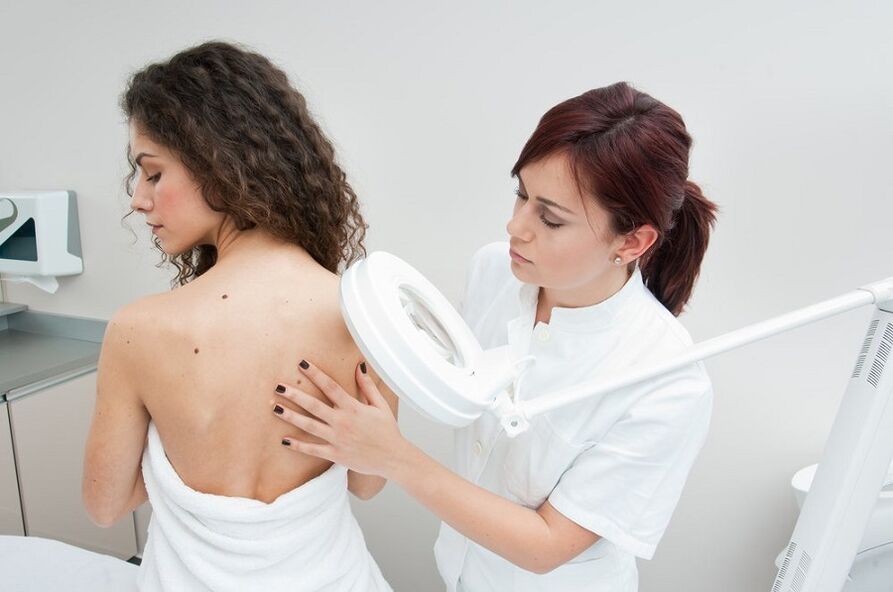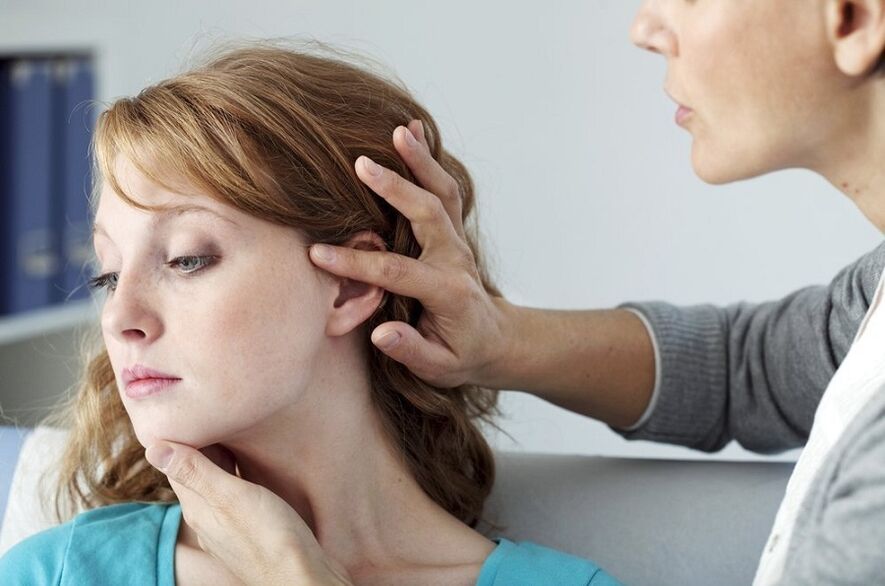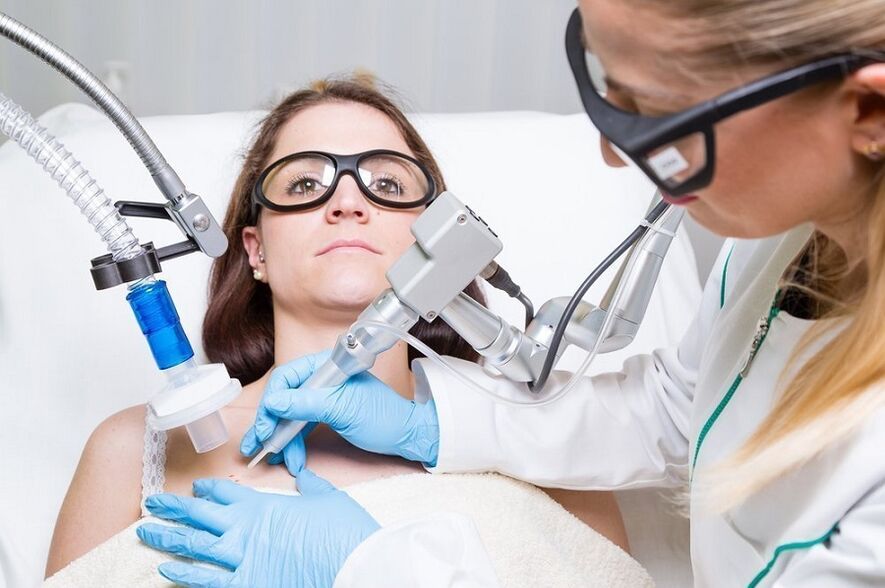A wart is a benign neoplasm of the skin that occurs due to the overgrowth of cells in the epidermis and papillary dermis, caused by the human papillomavirus, which is transmitted by contact.
Wart: causes, types, diagnosis and treatment
A wart is a mostly benign localized formation caused by epidermal hyperplasia. Papillomatous growths and papules most often appear due to the activity of viral infections. The main reason for their appearance is the presence of the human papillomavirus (HPV) in the body. HPV infection occurs through household contact, as a result of which the viral flora enters the skin or mucous membranes. Various injuries on the skin and mucous membranes, as well as weakened immunity, increase the risk of infection.
As the statistics show, over 60% of the population is a carrier of HPV. At the same time, symptomatic HPV may not manifest itself even throughout life. Warts, many of which are called papillomas, only appear on the skin and mucous membranes if there are favorable factors for it.
There are different types of warts, the appearance of which is caused by one type of virus or another. Each type of skin lesion can be localized either on the skin or on the mucous membranes. It is not always possible to remove the virus from the body.
Warts on the legs, arms, and other parts of the body in adults
Both men and women are equally susceptible to infection with human papillomavirus and, as a result, the appearance of neoplasms such as warts on the skin and mucous membranes. Penetration of the virus into the body is possible, both with the usual handshake or the use of general hygiene products, and during sexual intercourse. Once in the human body, the virus enters the epidermoid epithelium of the skin and actively multiplies there. The incubation period for HPV can range from one to one and a half months to six months or more.
Warts on the face, genitals, and other parts of the body in women

Warts in women can appear on any part of the body at any time of life. In shape, color and size, they can be different, ranging from small flat warts on the face of white color, ending in dark genital warts on the mucous membranes of the genitals. It is worth noting that genital warts, according to the results of research, can cause the development of cervical cancer. In addition, official confirmation has received the relationship between warts, which are an external manifestation of HPV, with an increased risk of breast cancer.
Papillomas and warts in men
The stronger sex organism is less susceptible to infection and active reproduction of the virus in general and the appearance of papillomas and warts in particular. Only a sharp decrease in immunity caused by various diseases can provoke the appearance of benign formations on the skin and mucous membranes in humans. It is worth noting that papillomas and warts on the genitals in men can be localized in the area of the coronary sulcus and frenulum, sometimes the head or body of the penis, on the integument at the entrance to theurethra and directly on its mucous membranes, in the perianal region.
What are the types of warts in children?

People of all ages are susceptible to the appearance of warts. But warts are more common in children and adolescents. The reason may be various papillomatous viruses. Infection of the child's body usually occurs through contact and through household means. Children are much more likely to communicate closely with other babies in large groups and to easily "catch" various viruses from each other. In addition, a child can become infected with the papilloma virus from the mother during intrauterine development or childbirth.
Warts: causes of appearance
Many factors can contribute to the appearance of warts. Transmission of papillomatous virus, as mentioned earlier, occurs through close contact with an infected person or their property. In addition, the virus carrier, who does not show any external manifestation, can also act as a source of infection. In addition, autoinoculation or, in other words, auto-infection is not excluded. Thus, warts on the face and neck may appear after shaving and cosmetic peeling. The same goes for papillomas and warts on the legs, chin and armpits. Various skin lesions only increase the risk of contracting HPV. This often happens in swimming pools, gyms and saunas.
Provoking factors

The virus that causes the formation of warts is unlikely to enter the body of a healthy person with strong immunity. The risk of infection can be increased by:
- Damage to the skin and mucous membranes.
If they are present, contact with the integument of an infected person or an object with a virus on it can lead to infection. HPV can stay in the environment for about 2 to 3 hours. During this period, the likelihood that a person will be infected with it is quite high. Injury (wounds, cuts, scrapes), sweating and, as a result, the constant moisture of the skin only increases it.
- High humidity and heat.
Such a provoking factor is most relevant for the appearance of warts on the legs. Uncomfortable parkas that cause excessive foot sweating, calluses and lesions on the skin can cause epithelial growths such as warts on the feet.
- Weakened immune system.
Even with the presence of a virus in the body, the appearance of warts is far from always observed. A person can carry the virus for decades without realizing it. With strong immunity, the body constantly suppresses the virus, preventing it from multiplying. As soon as the immune system weakens, the virus is immediately activated, which is accompanied by the appearance of external manifestations.
Seborrheic wart
With age, significant changes occur in the human body, which are reflected not only in appearance, but also in health. So, a violation of the distribution of the basal cells of the epidermis leads to the appearance of benign formations, called seborrheic warts. In another way, these warts are called senile. It is quite simple to identify senile warts by their characteristic appearance:
- they are represented by papules or plaques protruding from the surface of the skin.
- neoplasms are round or oval;
- they are usually localized on the skin of closed areas of the body, as well as on the face and scalp;
- the color of warts can be yellow-brown and sometimes even black;
- the size of the formations can vary from 0. 5 to 4 cm.
The boundaries of seborrheic wart are clear. They protrude slightly above the skin and may be slightly flattened.
If you have these warts on your hands, face, body, or head, you should see a doctor. To determine the most effective and safe tactics for their treatment and elimination, it is necessary to conduct a differential diagnosis, which will distinguish seborrheic warts from:
- Pigmented nevi.
These neoplasms are benign. Much like seborrheic warts, pigmented nevi are yellow-brown or dark, closer to black. Sometimes the papillomatous surface of the nevi is covered with hairs. Their size may be different. In shape, neoplasms of this type can be represented by giant plaques or flat papules with a smooth surface.
- Dermatofibromas.
Such a benign formation is formed from the skin and connective tissue. In their appearance, dermatofibromas have some similarity to moles and warts. The surface of the formations can be both smooth and keratinized. Their shape is round. The dermatofibroma is partially located in the upper layers of the skin and partially protrudes above its surface. Most often, single neoplasms are found. Their color can be different: from gray-pink to purple. Sometimes dermatofibromas are brown or black. The size of the formations is about 1 cm.
- Melanoma.
Unlike dermatofibroma and pigmented nevus, melanomas are malignant tumors. They appear at the site of moles or nearby tissue sites. The factors provoking the malignancy of skin cells are ultraviolet rays, various damage.
Human papillomavirus infection

As mentioned earlier, HPV is the cause of HPV infection. To date, more than a hundred of its varieties are known, which can affect the organism in one way or another. Each type of virus causes certain types of warts:
- HPV 1 - benign formations on the palms and soles of the feet;
- HPV 2 - ordinary (vulgar);
- HPV 3, 10, 28 and 29 - flat neoplasms;
- HPV 4 - warts on the soles of the feet and common warts;
- HPV 6, 11 - laryngeal papillomatosis and genital warts;
- HPV 5, 8, 9, 12, 14, 15, 17, 19-25, 36, 39, 40 - generalized manifestation of the virus, which is a verrucous epidermodysplasia;
- HPV 7 - common warts;
- HPV 13, 32 - focal proliferation of epithelial tissues;
- HPV 16, 18, 31, 33, 35 - malignant neoplasms such as carcinomas and genital dysplasia.
In addition, with weakened immunity, the human body becomes more susceptible to papillomatous viruses type 26 and 27. In some cases, HPV 30, 34, 37 and 38 can become the cause of benign and malignant tumors.
It should also be noted that some types of papillomatous viruses are transmitted through household contact, while others are transmitted sexually.
Types of warts: common, plantar and others, treatment
A fairly large number of varieties of papillomatous viruses and other causes of the appearance of warts lead to different localization of formations and their different characteristics. So there is:
- Common warts, also called common warts.
They are most often localized on the skin of the hands. These growths can range in color from flesh to brown.
- Plantar warts.
Such formations grow deep in the tissues, causing painful sensations and accompanied by thrombosis of the capillaries, which bleed even with the slightest damage. Plantar warts require treatment by a doctor, not cutting them on their own or in a nail salon.
- Flat warts.
Their localization, as a rule, is observed on the skin of the neck, face, chest, flexes of the knees and forearm.
- Anogenital warts, more commonly known as genital warts.
Such formations affect the skin and mucous membranes of the external genitalia, as well as the perianal region. Their localization is possible at the entrance to the urethra with subsequent proximal propagation.
- Perianal warts.
These formations are most often located in the anus and vagina, as well as on the neighboring tissues of the external genitalia in women. In humans, perianal warts are localized in the anus.
- Laryngeal papillomatosis.
This manifestation of the virus occurs mainly in childhood. The masses can be multiple, which is a particular danger to life, causing obstruction of the airways.
Anogenital warts
Anogenital warts are benign neoplasms localized on the skin and mucous membranes of the external genitalia, as well as in the perianal region. All anogenital warts are generally divided into:
- Typical condylomas.
Such warts are localized, as a rule, at the entrance to the vagina, in the anus, and also on the inner layer of the foreskin. In their form, these neoplasms can resemble cauliflower.
- Papular warts.
The surface of these neoplasms is smooth and does not contain keratinized layers.
- Hyperkeratotic warts.
Unlike previous warts, the surface of these anogenital formations is covered with keratinized tissue particles. For the most part, hyperkeratotic condylomas are localized on the outer sheet of the foreskin, the body of the penis, and the scrotum in men, as well as on the labia majora in women.
- Flat warts.
The formations are represented by spots protruding slightly above the surface of the skin. They are practically invisible and are not always immediately identified by a person.
Giant condylomas Buschke - Levenshtein

Carninoma-like genital warts occur when the HPV 16 virus. Some studies show that HPV viruses types 1, 6, 11, 18, 31, 33, transmitted both by contact and sexually, can also causethe appearance of such warts. The second name of such education is the giant condyloma Bushke-Levenshtein. Its main differences are:
- rapidly gradual increase in size;
- the possibility of rehabilitation after treatment;
- destruction of neighboring tissues;
- high probability of malignancy with the subsequent development of squamous cell cancer of the skin.
Young and old people are the most susceptible to this type of neoplasm. In the male body, the virus is manifested by the appearance of genital warts on the tissues of the glans head and foreskin. Sometimes Buschke-Levenshtein condyloma can be localized on the integument of the penile trunk. In the female body, formations are usually located in the perianal, anorectal and groin areas. Their appearance on the face, oral mucosa, as well as other areas of the skin and mucous membranes is not excluded.
Common warts on fingers and other parts of the body
The most common benign skin lesions are common warts, also called common warts. In appearance, these formations are hard, dry prominences on the skin. Their surface is uneven. The sizes vary in a few millimeters. Most often, these warts are localized on the fingers and hands, as well as on the face. The color of neoplasms is usually grayish, yellow-brown, or flesh-colored.
Palmoplantar warts on the arms and legs
Warts can easily appear on both the palms and the soles of the feet. They come in a variety of shapes and colors, ranging from pale yellow to dark brown. These epithelial formations are common in the population. They can be superficial and mosaic in appearance or deep (hyperkeratotic).
The treatment of palmar and plantar warts is complex. A dermatologist, during a thorough diagnosis, must necessarily exclude lichen planus and verrucous tuberculosis.
Flat warts on the face

A flat wart is almost always small and has a smooth (rarely scaly) surface. Its color practically can not differ from the color of the skin, which is why people often live with such formations and do not even notice them. As a rule, such flat epithelial formations appear on the skin in whole groups.
The specialist will be able to accurately detect and identify flat warts on the face or, for example, on the backs of the hands from the first appointment. A visual examination will suffice for a competent physician to understand what he is dealing with. If the dermatologist has doubts about the presumptive diagnosis, additional diagnoses, including laboratory tests, may be assigned.
Diagnosis of human papillomavirus infection
The clinical manifestations of a wart depend mainly on where it formed. Each individual type of epithelial tumor described above has its own individual characteristics.
- A common wart is characterized by pronounced hyperkeratosis (high rate of cell division of the stratum corneum and peeling).
It may look like a nodule or dome-shaped papules. These warts appear mainly in places where the risk of tissue damage is increased, that is, on the skin of the hands, feet and elbows.
- Flat warts have a flattened apex, they are small in volume and do not exceed 3-4 mm in diameter.
If a wart is seen in the area of the skin folds, its initial diagnosis may be difficult, as these papules or growths may show up as flat or ordinary warts.
- Warts on the soles of the feet may be accompanied by a symptom of pain, as these areas of the body are constantly subject to trauma. The center of such an epithelial tumor may be slightly depressed.
It is also not uncommon for several warts on the sole to merge into a single structure, forming a specific pattern in the form of a mosaic.
- As for filamentous warts, such a problem can appear on the skin of the face.
They grow rapidly, therefore, when detected, they try to be eliminated as a cosmetic defect.
- Also, warts can be diagnosed in the oral cavity, where the formations are most often represented by small whitish or pink nodules.
Such a problem is found in extremely rare cases, as a rule, during a dentist appointment or during a routine examination of the body.
Warts: treatment

Epithelial tumors in the form of warts are treated only under the strict supervision of the attending physician. Therapy can not be general, since each individual case of the onset and development of the disease is individual. That is why it is not advisable to use questionable drugs on the advice of friends, advertising or a pharmacist in a pharmacy.
To date, there is no specific treatment for the human papillomavirus. It is for this reason that the treatment of warts is aimed at eliminating the symptoms of a viral lesion.
If a patient is diagnosed with condyloma, then this type of education necessarily requires well-chosen therapy, since there is a risk of malignant degeneration.
There are several methods of treating warts, each with its own characteristics. The effectiveness of all therapeutic methods is about 70%.
Remedy for warts: external therapy
The main aim of treatment for warts is to eliminate them. This can be done through physical intervention or medication.
With external methods, warts are treated in a complex. The doctor may prescribe cauterizing drugs and keratolytic drugs. It can be 10% silver nitrate solution, 50% lactic acid solution.
Your doctor may recommend antiviral medication for warts.
Cytotoxic drugs, such as fluorouracil cream, are also topical. Prescribed for the treatment of warts and all kinds of salicylic acid plasters (40%).
The physical destruction of warts can be accomplished by liquid nitrogen and electrocoagulation. Chemical destruction of tissues can be carried out using salicylic or trichloroacetic acid, sodium-silver solution, sodium hydroxide.
Immunotherapy is also used. Once the wart is removed, your doctor may prescribe anti-inflammatory medication.
It is forbidden to remove warts at home

Traditional medicine, according to most, can safely treat many diseases. But this opinion is wrong, because decoctions, infusions and all kinds of compresses of essential oils and herbs can only play an auxiliary role, and in no case should be used as the main type of therapy.
In combination with medicinal effects, the attending specialist can prescribe recipes of alternative medicine with celandine, rowan fruits, wormwood, onions, flaxseed oil, milkweed.
Removal of warts at home is not carried out. Education cannot be cut with sharp objects, pierced and cauterized. Only a competent doctor, having diagnosed the patient's condition, can prescribe adequate and safe treatment. Be careful and do not recklessly treat yourself.
Laser wart removal and other methods
Modern medicine uses several surgical techniques to remove warts.
- Electrocoagulation is one of the most proven methods of removing various warts.
The manipulation is performed under local anesthesia using a coagulator. The high frequency current supplied to the steel loop helps to finely cut the epithelial mass and prevent bleeding during and after surgery.
- Surgical excision is prescribed for extensive skin lesions.
The manipulation is performed under local anesthesia, followed by the imposition of cosmetic sutures, which are removed after about 1 week. A small scar may remain.
- Laser warts removal is the newest method of treatment.
The effect of such manipulation may be in the form of evaporation or coagulation of skin cells. Laser warts removal is quick and absolutely painless, as the procedure is performed under local anesthesia. After removing the wart, a small depression may remain, which will disappear after 12 to 20 days.
Laser removal is now offered by many medical centers and clinics.
- Warts are also eliminated at low temperatures.
Deep freezing of tissues leads to their death. This is how the cryodestruction of liquid nitrogen is carried out.
Such wart removal is carried out using a cryoapplicator or an applicator stick with a cotton swab. In any case, the procedure is effective and only takes a few minutes.
The applicator is applied to the wart (perpendicularly) and lightly pressed on it. The time it takes for an epithelial tumor to freeze depends mainly on its size. It usually takes 7 to 35 seconds to freeze.
It is important to know that not all wart removal guarantees that the problem will not reappear. The likelihood of re-formation depends on many factors, including the patient's immune system. According to statistics, a relapse of the disease occurs after 3-4 months in more than 20% of patients. That is why many doctors, in addition to the surgical removal of warts, prescribe general anti-relapse treatment.
Warts prevention

In order to protect yourself at least a little from a viral infection and reduce the risk of warts on the body, doctors advise you to lead a healthy lifestyle first of all. It is necessary to constantly competently maintain the immune system, which loses its protective functions due to constant nervous tension, lack of sleep, malnutrition and even a lack of vitamins.
Doctors recommend:
- Refuse casual sex. It is advisable to have a permanent and healthy partner.
- Adhere to the rules of personal hygiene. You must not use someone else's towel, go to a public bath without your own change of shoes.
- Treat skin lesions properly.
It is also important to eat well, lead an active lifestyle, get rid of bad habits, get enough sleep, be less nervous, because all these factors negatively affect the immune system.























